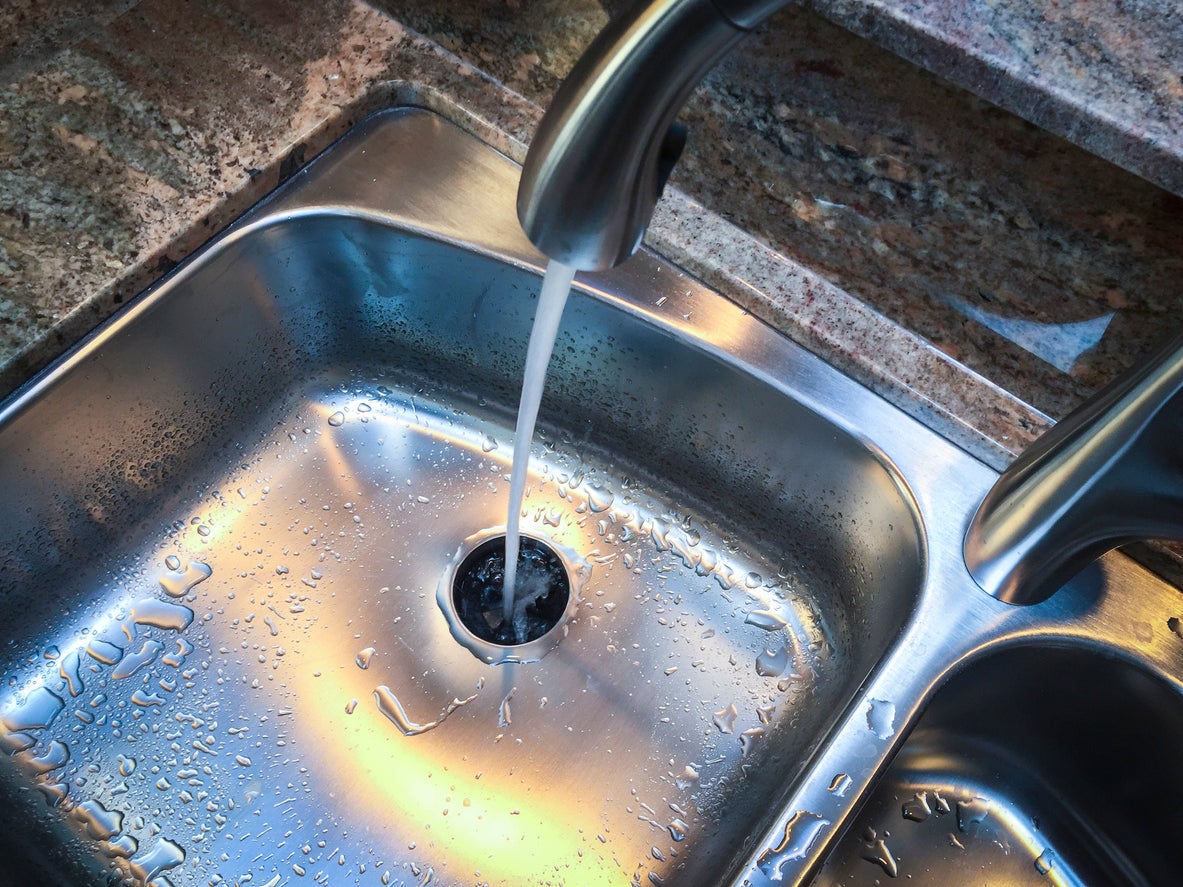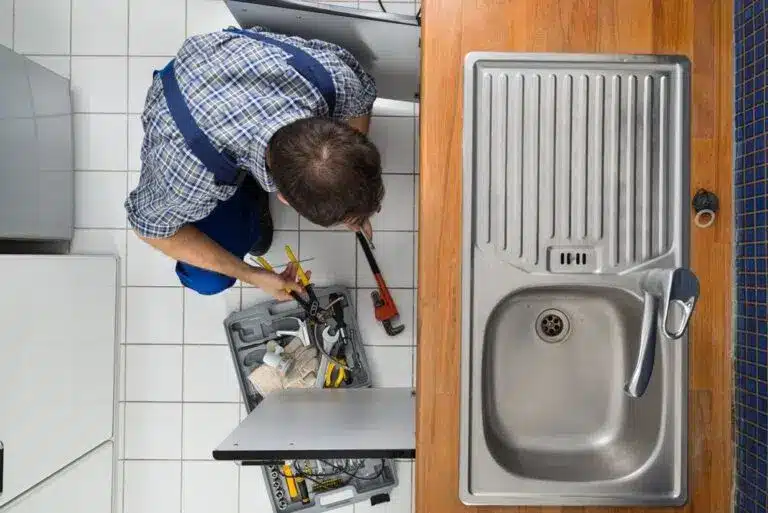Confirmed Ways to Fix a Leaking Waste Disposal Unit
Confirmed Ways to Fix a Leaking Waste Disposal Unit
Blog Article
Have you been on the lookout for facts around Tips on Fixing a Leaking Garbage Disposal?

Garbage disposals are crucial kitchen appliances that aid in throwing away food waste effectively. Nevertheless, a dripping waste disposal unit can be an aggravating and untidy issue to manage. The good news is, several leakages can be taken care of conveniently with a few straightforward steps. In this post, we will talk about how to deal with a leaking garbage disposal efficiently.
Intro
Waste disposal unit are set up under cooking area sinks and are made to shred food waste right into smaller sized items, permitting it to pass through the plumbing system conveniently. While these gadgets are usually trustworthy, leakages can occur with time because of damage, loose connections, or damage to the system.
Usual Reasons For Leakages in Rubbish Disposals
Worn Seals and Gaskets
Seals and gaskets play an important role in preventing water from leaking out of the garbage disposal. In time, these parts can degrade, resulting in leaks around the disposal device.
Loose Links
The links between the waste disposal unit and the pipes system can end up being loose with time, causing water to leakage out throughout procedure.
Splits or Openings in the Disposal System
Physical damages to the waste disposal unit, such as cracks or holes in the real estate, can also cause leaks.
Determining the Resource of the Leakage
Before trying to repair a leaking waste disposal unit, it is important to recognize the resource of the leakage. This can normally be done with aesthetic assessment or by conducting simple tests.
Visual Inspection
Check the garbage disposal unit very carefully for any kind of indicators of water leakage. Pay close attention to areas around seals, gaskets, and connection points.
Testing for Leakages
One method to test for leaks is by running water through the disposal system and looking for any type of visible indications of leakage.
Tools and Products Needed for Fixing a Leaking Waste Disposal Unit
Before starting the fixing procedure, gather the necessary devices and products, including a screwdriver, adjustable wrench, plumbing technician's putty, substitute seals or gaskets, and epoxy or patching material for fixing cracks or openings.
Step-by-Step Overview to Taking Care Of a Leaking Garbage Disposal
Shut off the Power
Before attempting any type of fixings, ensure that the power to the waste disposal unit system is switched off to stop the risk of electric shock.
Locate the Leakage
Determine the exact place of the leak and figure out the reason.
Tighten Connections
Use a wrench to tighten up any kind of loosened links in between the disposal device and the plumbing system.
Replace Seals or Gaskets
If the leak is due to used seals or gaskets, remove the old components and change them with new ones.
Patching Splits or Holes
For cracks or openings in the disposal unit, use epoxy or a suitable patching material to secure the damaged area.
Checking the Garbage Disposal After Fixing
As soon as the repair service is complete, test the waste disposal unit by running water through it to make certain that the leakage has actually been resolved.
Preventive Maintenance Tips to Prevent Future Leaks
To stop future leaks, it is important to perform normal upkeep on your waste disposal unit. This consists of keeping it tidy, avoiding placing non-food items or difficult items down the disposal, and occasionally checking for leaks or various other problems.
Conclusion
To conclude, dealing with a leaking waste disposal unit is a reasonably simple process that can be finished with standard devices and products. By following the actions detailed in this post and exercising precautionary maintenance, you can keep your garbage disposal in good working condition and prevent pricey repairs in the future.
What to Do About a Leaking Garbage Disposal
A leaking garbage disposal often goes unnoticed until you confront a sopping cabinet, a foul-smelling puddle, or an audible drip-drip-drip from the unit. The fix can be frustrating, too, because the leak can stem from a number of components in the system. Fortunately, with a little sleuthing, you can zero in on the leak and—depending on the exact location—stop the icky oozing and repair the component that caused it. Worst case scenario, if it turns out that the garbage disposal must be replaced, installing a new one is a reasonable do-it-yourself task for those with basic plumbing skills. Read on to keep the cash you’d otherwise hand over to a pro.
Prepare to find the leak
Prior to testing the garbage disposal for leaks, unplug it at the wall outlet and turn off the power from the breaker box to prevent electrical shock. Then insert a watertight sink stopper into your sink drain and wipe the unit dry with a clean cloth. In any handy container, mix a few drops of food coloring into a few cups of water, and pour the dyed water onto the sink stopper to help you locate the leak.
Investigate the source
the top, where the disposal meets the sink drain the side, where the dishwasher hose or main drain pipe connects to the disposal or the bottom of the unit Inspect each of these locations while gliding a light-colored rag over the unit; the dyed water will readily show on the rag and reveal the location of the leak. If a leak isn’t immediately apparent, remove the sink stopper and pour a few more cups of dyed water down the sink drain, then check for leaks again. Leaks near the top of the unit are more likely to show themselves while the sink is plugged, while side and bottom leaks are more noticeable while the sink is unplugged.
The metal sink flange that sits directly inside the sink drain is typically sealed around the top with plumber’s putty (a clay-like sealant) and then secured from under the sink with bolts. If the plumber’s putty deteriorates, or the bolts loosen, the flange can no longer form a watertight seal between the sink drain and the disposal—which could cause a leak at the top of the unit.
To reseal the leaky flange, you must first detach the garbage disposal. Start by loosening the screws securing the main drain pipe to the disposal, then loosen the screws in the metal clamp securing the dishwasher hose to the disposal and detach the drain pipe and dishwasher hose from the disposal. Loosen the screws in the mounting ring that connects the disposal to the metal mounting assembly beneath the sink, then pull down the disposal and carefully set it on a clean, dry surface. Loosen the bolts in the mounting assembly with a wrench, then pull down the mounting assembly and set it near the disposal.

I recently found that review on Why Is My Garbage Disposal Leaking From the Bottom? when browsing on the search engines. So long as you appreciated our blog post kindly don't forget to pass it around. I praise you for your time. Come back soon.
Schedule Your Job Now Report this page